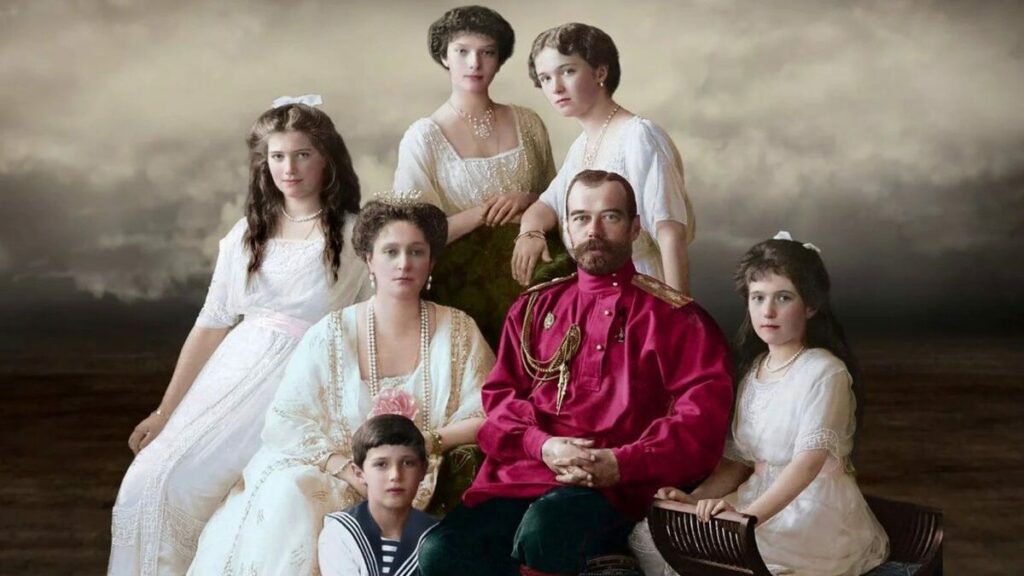Historical Essays
Russia’s Repentance for the Romanov Regicide
On a private tour of the Solzhenitsyn House in Moscow in 2018, I viewed an extraordinary exhibition detailing the lives of those who fled Russia in the wake of the 1917 Revolution and never returned. Founded by Aleksandr Solzhenitsyn, the massive archive serves as a repository of the history of the Russian diaspora, storing the memories of the exiles—including much of the Imperial elite. Time and again, our tour guide, Vera, returned to the Romanovs. “The monarchy has always been central to the Russian identity,” she said. “It is now a collective national trauma for Russians that we killed the tsar’s family. Especially after the collapse of the Soviet Union, many now look back to the Romanovs with nostalgia and profound pain.” “There has been a reckoning,” Vera said, an attempt at collective national repentance for a century-old regicide.
The title ‘tsar’ has surfaced frequently of late. In 2016, Stephen Lee Myers published The New Tsar: The Rise and Reign of Vladimir Putin; the BBC reprised the moniker in 2018 with the documentary “Putin: The New Tsar.” It has become popular to refer to Putin in such terms; Radio Free Europe called Putin “a modern-day Tsar”; several books call him an “accidental Czar”; the Telegraph and the Washington Post have both used the title. Putin has even compared himself to Peter the Great and framed his war in tsarist terms. This, too, has fuelled an already longstanding interest in the Russian empire’s last true tsar, Nicholas II, murdered with his family by the Bolsheviks in a mansion ominously called the ‘House of Special Purpose’ in the Ural Mountains on July 17, 1918.
The road to regicide was one of paralyzing crises. In 1905, Tsar Nicholas and Empress Alexandra came under the thrall of the drunken, promiscuous ‘holy man’ Grigori Rasputin, whom the empress desperately hoped could heal their hemophiliac son Alexei. The Romanovs became isolated as scandal, the tsar’s incompetence in the face of worsening economic conditions, and public anger at the handling of World War I created a tinderbox. Nicholas fired competent officials; they were replaced by Rasputin sycophants. In 1916, a handful of desperate nobles murdered the mystic, who allegedly survived three glasses of poison and a gunshot wound to the chest before being shot in the head and dumped into the Little Nevka River.
Not even Rasputin’s assassination woke Nicholas to the mounting danger. He fired the popular commander in chief of the military and assumed supreme command himself. Riots broke out in St. Petersburg on March 8, 1917, and the government called for his abdication. Nicholas renounced the throne in favor of his brother Michael, who refused it, on March 15. The government placed him under house arrest with his family at the Alexander Palace south of St. Petersburg and attempted to exile the Romanovs to the UK. King George V, a first cousin of both Nicholas and Alexandra, was close to the tsar, with whom he shared a striking familial resemblance. After initially agreeing to offer the Romanovs asylum, the king reneged, fearing it might fuel anti-royalist sentiment in England.
It was a decision that would haunt him. After hearing of the mass execution the following year, George V mourned the “poor children” and wrote in his diary: “It was a foul murder. I was devoted to Nicky, who was the kindest of men, a thorough gentleman, loved his country and his people.”
In August 1917, the Romanovs were moved to Tobolsk, Siberia, allegedly to protect them from the revolutionaries. When the Bolsheviks seized power in October, sterner guards arrived, and the family was placed on soldiers’ rations. In April 1918, Lenin ordered the family to be moved again to Yekaterinburg. The girls were sexually molested by Bolsheviks on the train. Still, the family attempted to resurrect some normality in the heavily guarded ‘House of Special Purpose,’ a prison fortress with painted-over windows surrounded by machine gun nests. Nicholas read to his family; the girls befriended the guards, who were swapped when some indicated willingness to help them escape. As the Western-backed White Russian forces approached, the Bolsheviks decided that a rescue needed to be prevented.
In the early morning hours of July 17, 1918, the family was ordered into the cellar with four loyal retainers. Head executioner Yakov Yurovsky recalled: “I ordered them to stand along the wall. Obviously, at that moment, they did not imagine what awaited them. Alexandra Feodorovna said, ‘There are not even chairs here.’ Nicholas was carrying Alexei. He stood in the room with him in his arms.” Yurovsky abruptly read out the death sentence, and Nicholas started: “What? What?” A volley of gunfire answered, filling the room with dust and smoke. Nicholas and Alexandra were killed outright, but the children were still alive. Each guard had been assigned to shoot a family member, but most did not want to shoot the girls and had aimed instead at their parents.
The cellar became a hellish scene. The guards fired wildly, wounding even each other as awful shrieks filled the room. The children had sewn family jewels into their clothing, and the bullets ricocheted about the basement. Alexei, sitting on a chair, had an entire Browning magazine emptied into him before he was stabbed and finally shot in the head. The screaming girls were attacked with bayonets. One guard recalled that the floor was slick with blood and brains; even after twenty minutes, two of the girls were found to be alive as they were being carried out, triggering another frenzy of stabbing. This horrific detail—of the girls coughing as their killers bore them from the basement—gave rise to the legend of Anastasia Romanov’s survival and the many imposters that followed.
The deposed Tsar Nicholas II was only 50 years old; his wife Alexandra was 46. The beautiful Romanov daughters were still young women: Olga was 22, Tatiania 21, Maria 19, and Anastasia was just 17. Alexei was 13; his birthday was weeks away. Anastasia’s pet spaniel Jimmy and Tatiana’s bulldog Ortino were killed for good measure; Alexei’s spaniel, Joy, bolted at the sound of gunshots and was the sole survivor of the massacre. He was adopted by a White Russian colonel arriving with anti-Bolshevik forces shortly thereafter and is now buried in a garden near Windsor Castle—the only one to make it to England. The family had loved one another fiercely, and the confused and conflicting accounts of how they died together would become the stuff of legend and nightmare.
Their location remained a state secret for decades. The bodies were loaded onto a Fiat truck and driven into the forest, stripped naked, looted, and dumped first into a shallow mine shaft and then buried elsewhere. They were disfigured to avoid future identification, doused with sulfuric acid, and their faces smashed with rifle butts. The family remained hidden for nearly sixty years. In 1979, geologist Alexander Avdonin, who had grown up in the area and heard drunken tales of the murders from one of the assassins, and filmmaker Geli Ryabov, who had been given information by the son of another executioner, located and exhumed some remains after a years-long private investigation. Fearing the repercussions of their discovery, they reburied the skulls with icons and prayers, and the secret slept again.
READ THE REST OF THIS ESSAY HERE








